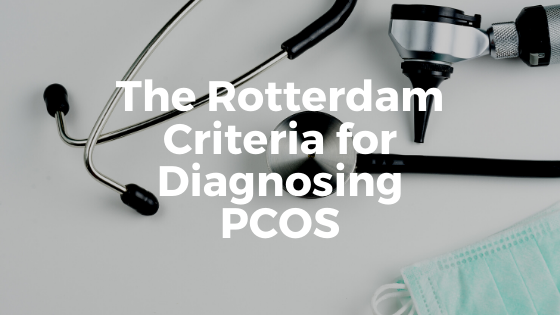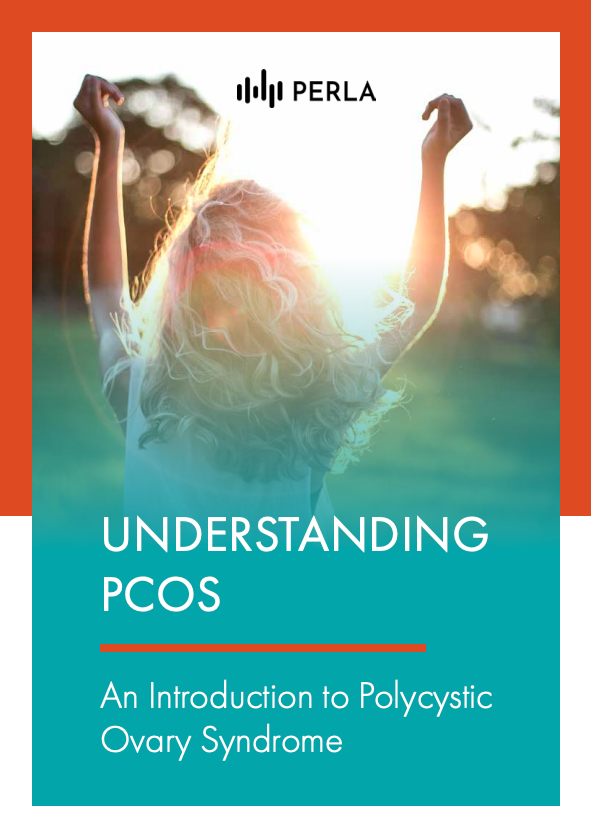Polycystic ovary syndrome (PCOS) is a chronic condition that affects millions of women around the world. Because of the symptoms such as weight gain, difficulty to conceive and anxiety and depression, as well as its association with an increased risk for cardiovascular and metabolic problems, it is essential to get an accurate diagnosis. Keep on reading to learn how PCOS is diagnosed based on the Rotterdam criteria, and what tests and information are used by clinicians to reach a diagnosis.
What Are The Diagnostic Criteria For PCOS?
Even though PCOS is very common, it can still be confusing to many people, even doctors. One of the problems with this condition is that there is no unifying test or single lab value that physicians can use to evaluate patients. Currently, it usually takes more than one visit or multiple doctors for it to get identified.1
Many women would have to deal with their symptoms for years before they receive an official diagnosis. A recent study of an Australian research team suggests that, in some cases, PCOS is even misdiagnosed.2 Furthermore, common misconceptions, including its impact on ovulation and fertility, persist among many patients. PCOS can lead to a range of symptoms, and not all patients see all symptoms, which is why it can be hard to identify at first.
The following symptoms are associated with PCOS, but not all are seen in every patient:
- Irregular or missed periods
- Weight gain (especially around the waist)
- Excess growth of hair on the body or face (hirsutism)
- Persistent acne (usually unresponsive to conventional treatment) or oily skin
- Thinning scalp hair
- Difficulty with conception / fertility
- Dark skin patches (acanthosis nigricans)
- Skin tags
- Pelvic pain
- Mood swings, anxiety or depression
What Are the Rotterdam Criteria For PCOS?
The Rotterdam criteria are the most widely-used tool for diagnosing PCOS. The first expert-approved definition of PCOS had been based initially on the National Institute of Health (NIH) criteria, which did not include the appearance of polycystic ovaries on ultrasound.
Polycystic ovaries were only recognized as a typical manifestation of PCOS during the 2003 Rotterdam conference. Two out of the three features of PCOS are required for a diagnosis in the revised criteria:
- Oligomenorrhea (irregular menstrual periods) or amenorrhea (absence of menstrual periods)
- Hyperandrogenism (based on clinical (signs on the body) and/or biochemical signs (hormone levels in the blood))
- Polycystic ovaries (on the ultrasound)
The Rotterdam criteria have been criticized for including milder phenotypes of PCOS, such as the combination of polycystic ovaries and irregular menstruations.3,4 In 2006, the Androgen Excess Society attempted to establish hyperandrogenism as the key feature: a woman has PCOS if she has high androgen levels and ovulatory dysfunction. Still, the official guidelines recommend the Rotterdam Criteria for diagnosing PCOS.5
PCOS Phenotypes Based On The Rotterdam Criteria6
Based on the Rotterdam criteria, the experts have identified 4 different PCOS phenotypes:
Phenotype A (Classic PCOS)
- Clinical or biochemical evidence of hyperandrogenism
- Absent or irregular periods
- Polycystic ovaries on ultrasound
Phenotype B (Essential NIH Criteria)
- Clinical or biochemical evidence of hyperandrogenism
- Absent or irregular periods
Phenotype C (Ovulatory PCOS)
- Clinical or biochemical evidence of hyperandrogenism
- Polycystic ovaries on ultrasound
Phenotype D (Non-hyperandrogenic PCOS)
- Absent or irregular periods
- Polycystic ovaries on ultrasound
In more detail, the features of the diagnostic criteria include:
Irregular Menstrual Cycle
Periods of more than 35 days apart or having less than 9 menstruations a year are strong signs of ovulatory problems. Your doctor may test your progesterone levels to check if you are ovulating. High levels of progesterone mid cycle (about 2 weeks before your period) is a sign of ovulation.7
Hyperandrogenism
Hirsutism is the primary sign of having higher than normal levels of androgen in the blood. Hirsutism is defined as having excessive growth of terminal hair (thick, dark, coarse hair) in women in a man-like pattern.8
It may develop before puberty or during adolescence, or it may be absent until the woman is in her 30s. Other clinical signs of androgen excess include oily skin, acne, and hair loss on the scalp. Some women with PCOS will not show any clinical signs of hyperandrogenism and problems to conceive may be the only presenting symptom.
To see if you have hyperandrogenism, your doctor may order blood tests to measure the levels of the following hormones:9
- Total testosterone
- Free testosterone
- Androstenedione
- Dehydroepiandrosterone sulfate (DHEAS)
Polycystic Ovaries (PCO)
Your doctor may also recommend a pelvic ultrasound to check your ovaries. Around three out of four women with PCOS have polycystic ovaries. The “cysts” in polycystic ovaries are not cysts per se, but rather immature follicles, so egg follicles that did not mature completely due to high levels of androgens. The use of ultrasound is not recommended for adolescents (less than 20 years of age), as the appearance of immature follicles in the ovaries are common in this age group.
What your doctor wants to learn from your ultrasound result is the number of follicles, the size of follicles, and the ovarian volume:10
- Number of immature follicles: 12 or more in each ovary
- Size of immature follicles: 2-9 mm in diameter
- Ovarian volume: more than 10 cm3
Once your doctor has looked at all three features, and excluded a number of other conditions that could mimic the same symptoms, they may be able to give you an accurate diagnosis and discuss possible treatment options with you.
Conclusion
If you are experiencing symptoms of PCOS, such as excess hair growth, weight gain, acne, hair loss, difficulties to conceive, anxiety or depression, make sure to discuss it with your healthcare provider. An early and accurate diagnosis is important to successfully manage your symptoms. Talk to a specialist or a dedicated PCOS care team to get reliable help and information about your diagnosis.
Sources:
- Gibson-Helm ME, Lucas IM, Boyle JA, Teede HJ. Women’s experiences of polycystic ovary syndrome diagnosis. Fam Pract. 2014;31(5):545-549. doi:10.1093/fampra/cmu028
- Copp T, Muscat DM, Hersch J, et al. Clinicians’ perspectives on diagnosing polycystic ovary syndrome in Australia: a qualitative study. Hum Reprod. 2020;35(3):660-668. doi:10.1093/humrep/deaa005
- Legro, Richard S. “Evaluation and Treatment of Polycystic Ovary Syndrome.” PubMed, MDText.com, Inc., 2000, www.ncbi.nlm.nih.gov/books/NBK278959/#eval-trt-polycyst-os.toc-etiology-and-pathophysiology. Accessed 3 Feb. 2021.
- Kovacs G, Norman R. Polycystic Ovary Syndrome. (Kovacs GT, Norman R, eds.). Cambridge University Press; 2001. doi:10.1017/cbo9780511545191
- Executive Summary of National Institutes of Health Evidence-based Methodology Workshop on Polycystic Ovary Syndrome. 2012; http://prevention.nih.gov/workshops/2012/pcos/docs/PCOS_Final_Statement.pdf. Accessed September 13, 2013.
- Rosenfield RL, Ehrmann DA. The Pathogenesis of Polycystic Ovary Syndrome (PCOS): The Hypothesis of PCOS as Functional Ovarian Hyperandrogenism Revisited. Endocrine Reviews. 2016;37(5):467-520. doi:10.1210/er.2015-1104
- Melmed S, Koenig R, Rosen C, Auchus R, Goldfine A. Williams Textbook of Endocrinology. Elsevier; 2019.
- Yilmaz B, Yildiz BO. Endocrinology of Hirsutism: From Androgens to Androgen Excess Disorders. Front Horm Res. 2019;53:108-119. doi:10.1159/000494907
- Straseski J. Polycystic Ovarian Syndrome – PCOS | ARUPConsult Lab Test Selection. Arupconsult.com. Published 2019. Accessed October 16, 2019. https://arupconsult.com/content/polycystic-ovarian-syndrome
- Smet M-E, McLennan A. Rotterdam criteria, the end. Australasian Journal of Ultrasound in Medicine. 2018;21(2):59-60. doi:10.1002/ajum.12096


